
Fig.1
Gilbert Soest c.1605–1681
Portrait of a Gentleman with a Dog, Probably Sir Thomas Tipping c.1660
Oil paint on canvas
939 × 1149 mm
T04162
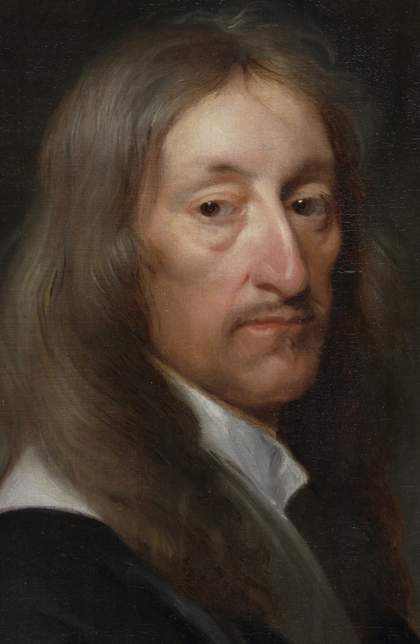
Fig.2
Detail of the head of Portrait of a Gentleman with a Dog, Probably Sir Thomas Tipping c.1660
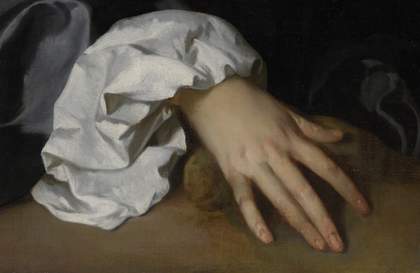
Fig.3
Detail of the hand and cuff of Portrait of a Gentleman with a Dog, Probably Sir Thomas Tipping c.1660
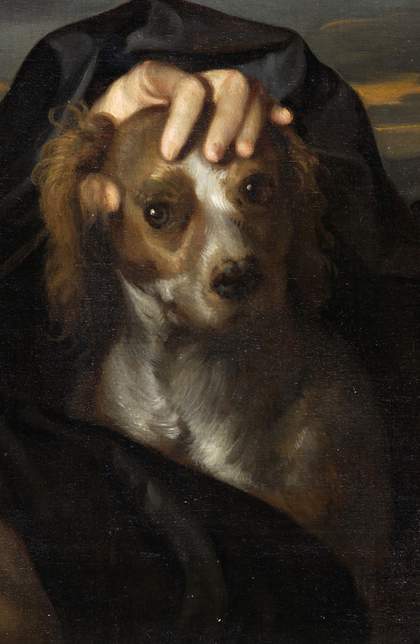
Fig.4
Detail of the dog in Portrait of a Gentleman with a Dog, Probably Sir Thomas Tipping c.1660
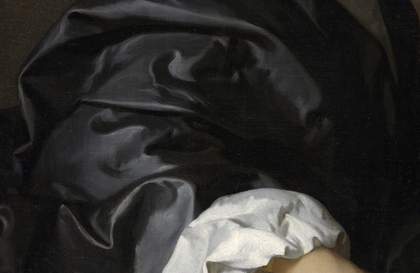
Fig.5
Detail of the sleeve of Portrait of a Gentleman with a Dog, Probably Sir Thomas Tipping c.1660
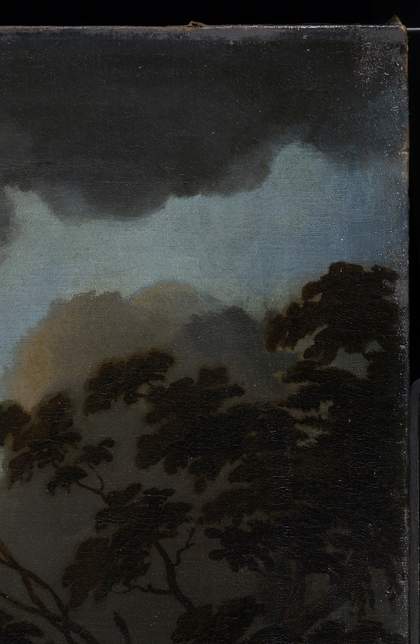
Fig.6
Detail of the top right corner of Portrait of a Gentleman with a Dog, Probably Sir Thomas Tipping c.1660
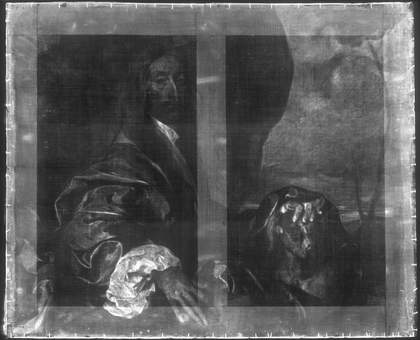
Fig.7
X-radiograph of Portrait of a Gentleman with a Dog, Probably Sir Thomas Tipping c.1660
This painting is in oil paint on canvas measuring 940 x 1150 mm (figs.1–6). The support is a single piece of plain woven, linen canvas with a weave count average of 15 horizontal and 12 vertical threads per square centimetre. The threads are fairly even in the vertical direction but are of much more variable thickness in the horizontal (fig.7). Cusping is present along all edges, but is more pronounced at the left and right.1 The tacking margins are extant; the degraded, vertical tacking margins are apparently unprimed, whereas the horizontal edges are primed and now painted black.
The X-radiograph shows a light toned band approximately 25 mm wide at each upright edge (fig.7). The origin of this feature is not known. The painting is now paste lined and attached with old, round headed, iron tacks to a non-original pine stretcher.
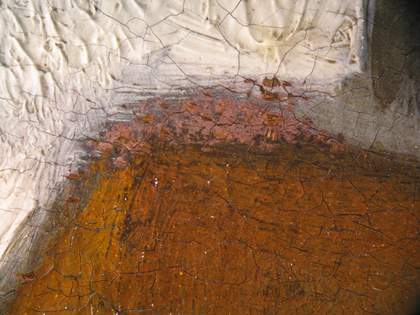
Fig.8
Photomicrograph at x8 magnification of the pink priming left visible at the white cuff
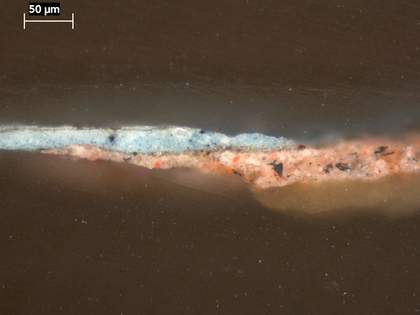
Fig.9
Cross-section taken from the blue sky, photographed at x320 magnification. From the bottom of the sample upwards: off-white ground; pink priming; thin grey underpaint of sky; two shades of opaque, pale blue paint, worked wet-in-wet; varnish
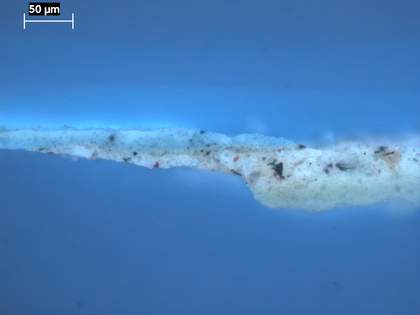
Fig.10
The same cross-section as in fig.9, photographed at x320 magnification in ultraviolet light
The ground is off-white and is rich in chalk. It varies in thickness. The priming on top of it is opaque brownish pink, which was mixed from the following pigments all bound together in oil: lead white, chalk, ground glass, pipeclay, red earth colours, cologne earth, bone black and possibly red lead (figs 8–10).2
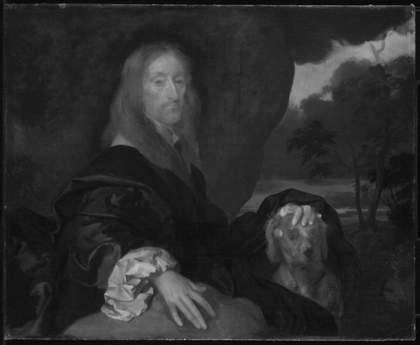
Fig.11
Infrared reflectogram of Portrait of a Gentleman with a Dog, Probably Sir Thomas Tipping c.1660
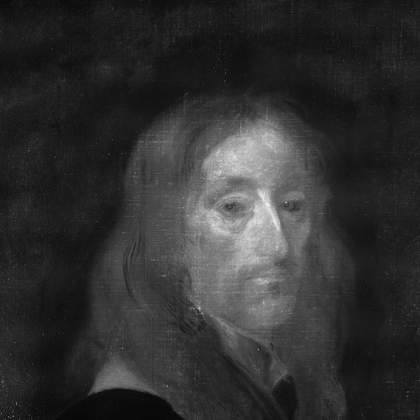
Fig.12
Infrared reflectogram detail of the head
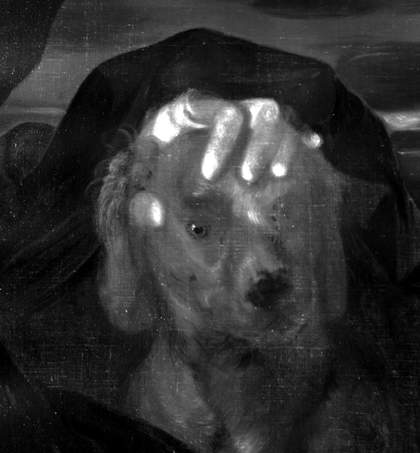
Fig.13
Infrared reflectogram detail of the dog’s head
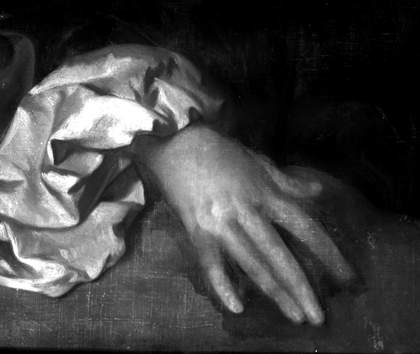
Fig.14
Infrared reflectogram detail of the sitter’s right hand
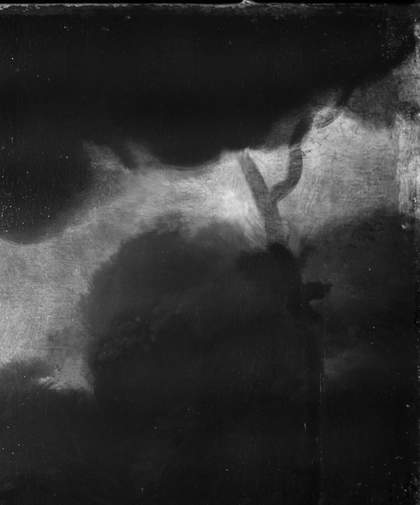
Fig.15
Infrared reflectogram detail of a change to the background sky with the initial inclusion of further tree trunk and branch on the right-hand side
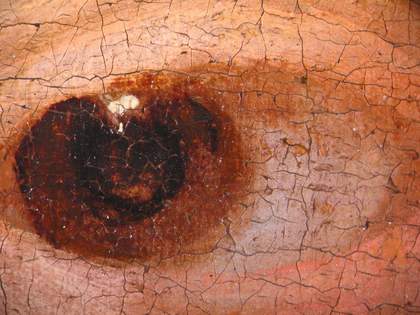
Fig.16
Photomicrograph of the white of the proper right eye with a thin pink glaze applied over light grey paint
No underdrawing is apparent with the unaided eye or with infrared reflectography (figs.11–15). Areas of the sky, background and the dog were first blocked in with opaque greyish brown paint. Very few compositional changes were made. The flesh tones and black drapery were painted directly onto the pink ground. Generally the brushwork is crisp and direct. It is noticeably brushy and with generally quite finely ground pigment particles. The flesh paint is a mixture of white, red lake, black and earths with a distinct inclusion of a bright yellow pigment. There is a notable absence of blue. A distinctive bright red earth was used to accentuate aspects of the flesh painting, for example the knuckles, finger outlines and eye sockets (fig.16). The black cloak was modelled first with dark shadows and mid-tones and the highest highlights were applied at a later stage. This is also true of the white cuffs, where a further warm mid tone was applied in the shadows. This is in contrast to the black cloak where all tones are cool.
March 2020
